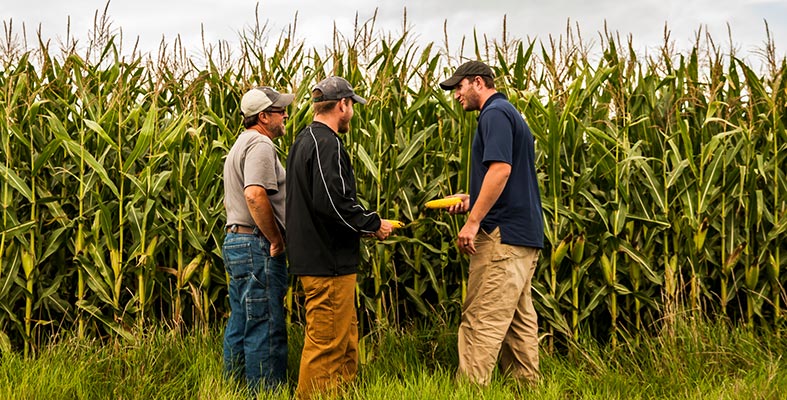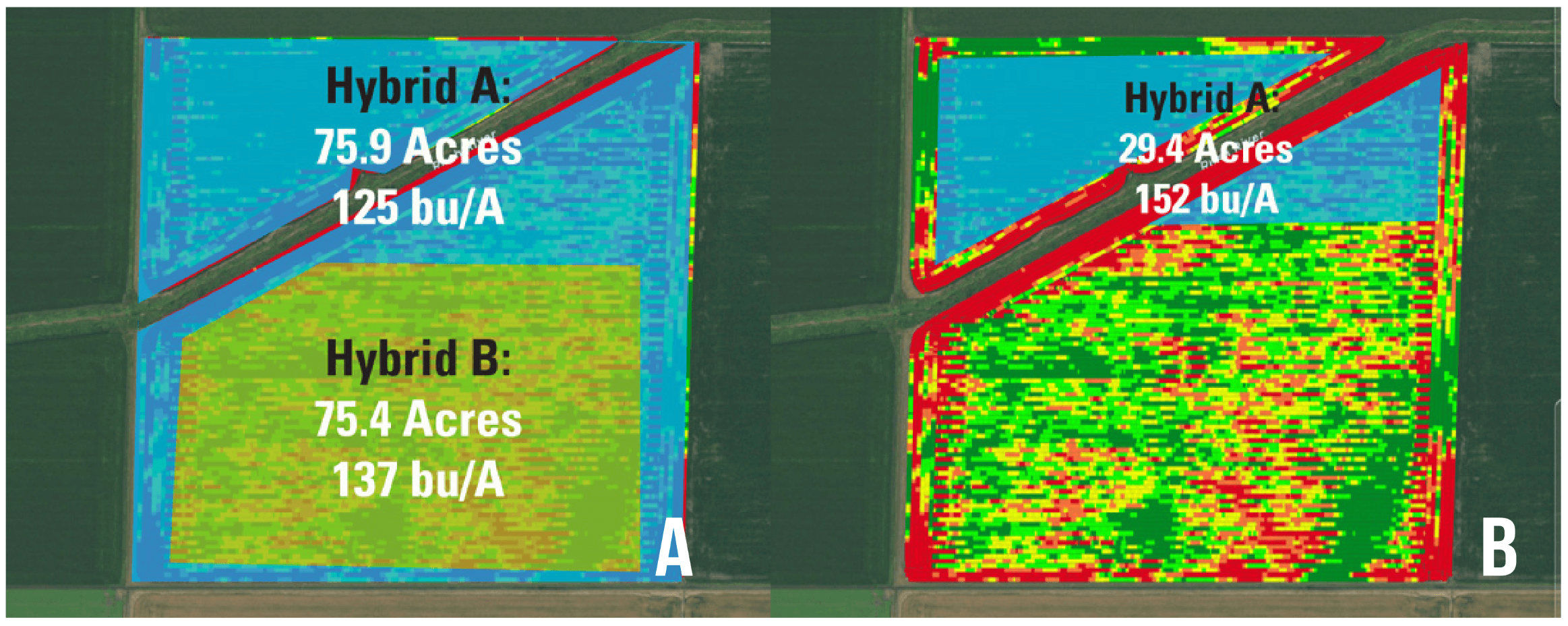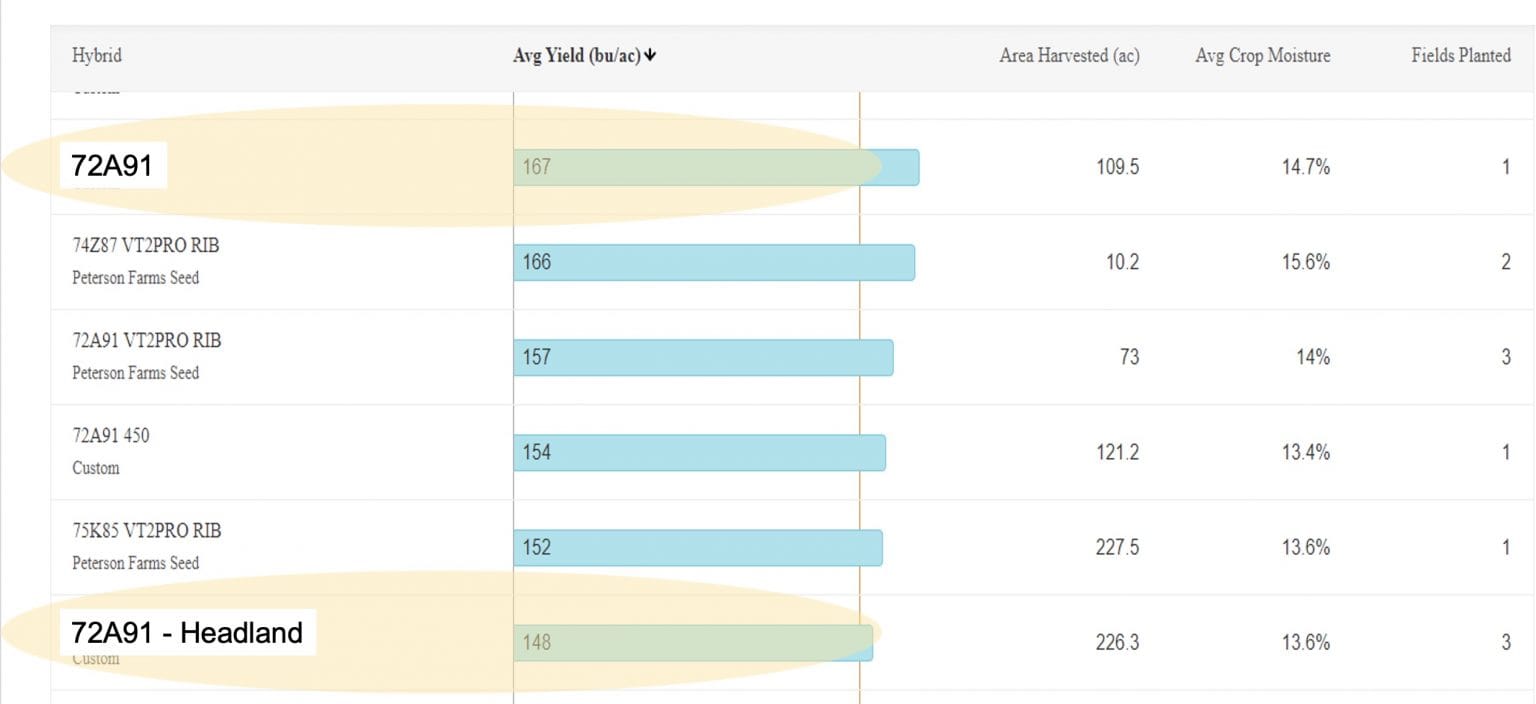Why You Should ‘Throw Away’ Your Headland Data

By Rick Swenson, Lead Agronomist & Nolan Berg, Precision Systems Agronomist
In 2023, we ran an article on removing headland data from your fall yield analysis. This year, we have further discussion with additional data to show the consistency of yield reduction from on headlands. Below is the breakdown from Carl’s farm over the past four years.
 Notice how the crop rotation on his farm affects his numbers. Carl’s 2021 and 2023 rotation include a lower percentage of headland acres, but a higher reduction in yield on those acres. This is most likely due to a few specific fields with an irregular shape and poor drainage.
Notice how the crop rotation on his farm affects his numbers. Carl’s 2021 and 2023 rotation include a lower percentage of headland acres, but a higher reduction in yield on those acres. This is most likely due to a few specific fields with an irregular shape and poor drainage.
As most would expect, the headlands cover roughly 20% of the fields. Yield reductions varied from as little as 4 bu/A up to 62 bu/A. These numbers are from 20 different corn fields from 2020-2023.
The takeaway is still the same as always: Rename the hybrid in your monitor at the time of planting so you can separate this data from the yield analysis in the fall!
You introduce many unexplained variables when you include headlands in your yield data. Water, compaction, insect pressure, or salts – whatever the variable is, the quality of the data from the rest of the field is destroyed and only poor management decisions will be made from there.
 For example, the field we looked at in 2021 had a headland with 62 fewer b/A. In this case, the headlands accounted for 28% of the field with a waterway that ran through it. By splitting the 150-acre field in half, Hybrid A averaged 125 bu/A and Hybrid B averaged 137 bu/A, so there was a 12-bushel difference (Photo A).
For example, the field we looked at in 2021 had a headland with 62 fewer b/A. In this case, the headlands accounted for 28% of the field with a waterway that ran through it. By splitting the 150-acre field in half, Hybrid A averaged 125 bu/A and Hybrid B averaged 137 bu/A, so there was a 12-bushel difference (Photo A).
However, the area that was 12 bushels less also included all the headland data. Next, we removed all of the headland data and revealed a 27-bushel increase in the main area of the field (photo B). Now, Hybrid A is beating Hybrid B by 15 bushels!
By including the headlands and the rest of the field as one hybrid in the summary, rather than removing the headland info, the yield difference wouldn’t have been evident. In addition, if it
were a brand-new hybrid and it was discarded because it “lost” by 12 bushels to the old standby, that would also be unfortunate.
Below is an example of how to best rename the hybrid, so it appears differently in the summary. The only real challenge is remembering to change the hybrid information before you start planting a headland, and switch when you start planting the field. Remembering is the No. 1 complaint we hear.
 The other challenge is if you forget altogether, changing this information or assigning it a different name after planting is both time-consuming and difficult.
The other challenge is if you forget altogether, changing this information or assigning it a different name after planting is both time-consuming and difficult.











